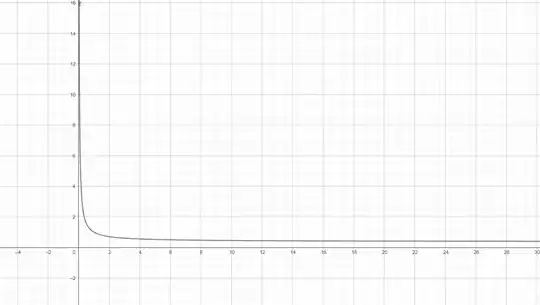I saw this question and I quickly noticed that the first inequality (after using $e^x$ on both sides) $\frac{N^N}{e^N}< N!$ can be written as $\frac{N!}{N^N}> e^{-N}$ or $\left(\frac{N!}{N^N}\right)^\frac{1}{N}> \frac{1}{e}$. This I want to prove in the end.
The famous limit $\lim\limits_{N \to \infty}\left(\frac{N!}{N^N}\right)^\frac{1}{N}= \frac{1}{e}$ will play a role in a purely algebraic proof, because if I can prove that the sequence $a_N:=\left(\frac{N!}{N^N}\right)^\frac{1}{N} $ is monotone decreasing, this will mean that $a_N > \frac{1}{e}$. But I couldn't find a proof. I tried to use the AM-GM inequality to prove that $\frac{\left(1+\frac{1}{n}\right)^{n}}{n} > \sqrt[n]{\frac{1}{n!}}$ and failed because it will result in a much more complicated problem.
The graphing calculator suggests that this sequence is indeed monotone decreasing (for all $x$).

Although Mittens gave a good proof to the linked question, which of course counts as a proof to this question, I wonder if there is a purely algebraic proof that the sequence $a_N:=\left(\frac{N!}{N^N}\right)^\frac{1}{N} $ is monotone decreasing without using integrals.